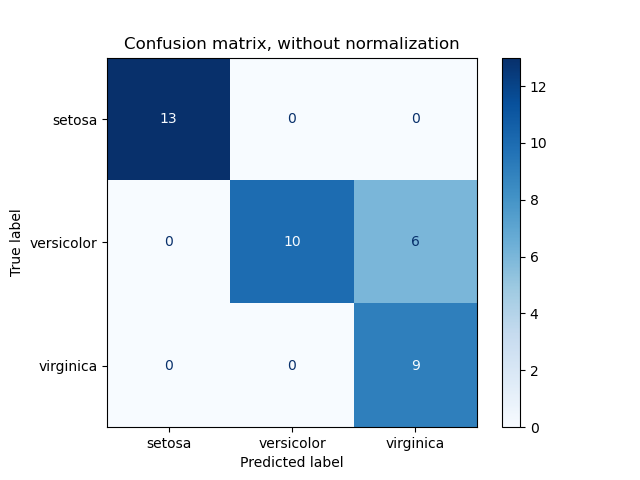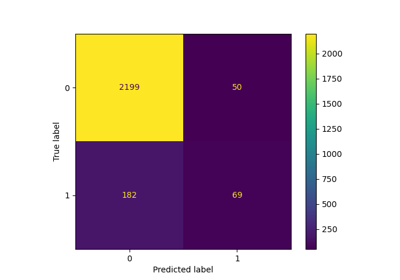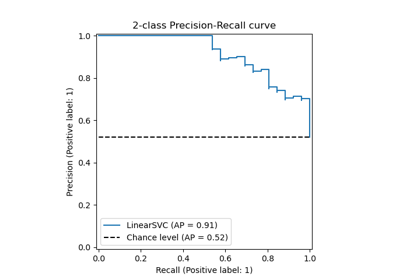Note
Go to the end to download the full example code or to run this example in your browser via JupyterLite or Binder.
Evaluate the performance of a classifier with Confusion Matrix#
Example of confusion matrix usage to evaluate the quality of the output of a classifier on the iris data set. The diagonal elements represent the number of points for which the predicted label is equal to the true label, while off-diagonal elements are those that are mislabeled by the classifier. The higher the diagonal values of the confusion matrix the better, indicating many correct predictions.
The figures show the confusion matrix with and without normalization by class support size (number of elements in each class). This kind of normalization can be interesting in case of class imbalance to have a more visual interpretation of which class is being misclassified.
Here the results are not as good as they could be as our choice for the regularization parameter C was not the best. In real life applications this parameter is usually chosen using Tuning the hyper-parameters of an estimator.
# Authors: The scikit-learn developers
# SPDX-License-Identifier: BSD-3-Clause
import matplotlib.pyplot as plt
import numpy as np
from sklearn import datasets, svm
from sklearn.metrics import ConfusionMatrixDisplay
from sklearn.model_selection import train_test_split
# import some data to play with
iris = datasets.load_iris()
X = iris.data
y = iris.target
class_names = iris.target_names
# Split the data into a training set and a test set
X_train, X_test, y_train, y_test = train_test_split(X, y, random_state=0)
# Run classifier, using a model that is too regularized (C too low) to see
# the impact on the results
classifier = svm.SVC(kernel="linear", C=0.01).fit(X_train, y_train)
np.set_printoptions(precision=2)
# Plot non-normalized confusion matrix
titles_options = [
("Confusion matrix, without normalization", None),
("Normalized confusion matrix", "true"),
]
for title, normalize in titles_options:
disp = ConfusionMatrixDisplay.from_estimator(
classifier,
X_test,
y_test,
display_labels=class_names,
cmap=plt.cm.Blues,
normalize=normalize,
)
disp.ax_.set_title(title)
print(title)
print(disp.confusion_matrix)
plt.show()
Confusion matrix, without normalization
[[13 0 0]
[ 0 10 6]
[ 0 0 9]]
Normalized confusion matrix
[[1. 0. 0. ]
[0. 0.62 0.38]
[0. 0. 1. ]]
Binary Classification#
For binary problems, sklearn.metrics.confusion_matrix has the ravel method
we can use get counts of true negatives, false positives, false negatives and
true positives.
To obtain true negatives, false positives, false negatives and true
positives counts at different thresholds, one can use
sklearn.metrics.confusion_matrix_at_thresholds.
This is fundamental for binary classification
metrics like roc_auc_score and
det_curve.
from sklearn.datasets import make_classification
from sklearn.metrics import confusion_matrix_at_thresholds
X, y = make_classification(
n_samples=100,
n_features=20,
n_informative=20,
n_redundant=0,
n_classes=2,
random_state=42,
)
X_train, X_test, y_train, y_test = train_test_split(
X, y, test_size=0.3, random_state=42
)
classifier = svm.SVC(kernel="linear", C=0.01, probability=True)
classifier.fit(X_train, y_train)
y_score = classifier.predict_proba(X_test)[:, 1]
tns, fps, fns, tps, threshold = confusion_matrix_at_thresholds(y_test, y_score)
# Plot TNs, FPs, FNs and TPs vs Thresholds
plt.figure(figsize=(10, 6))
plt.plot(threshold, tns, label="True Negatives (TNs)")
plt.plot(threshold, fps, label="False Positives (FPs)")
plt.plot(threshold, fns, label="False Negatives (FNs)")
plt.plot(threshold, tps, label="True Positives (TPs)")
plt.xlabel("Thresholds")
plt.ylabel("Count")
plt.title("TNs, FPs, FNs and TPs vs Thresholds")
plt.legend()
plt.grid()
plt.show()
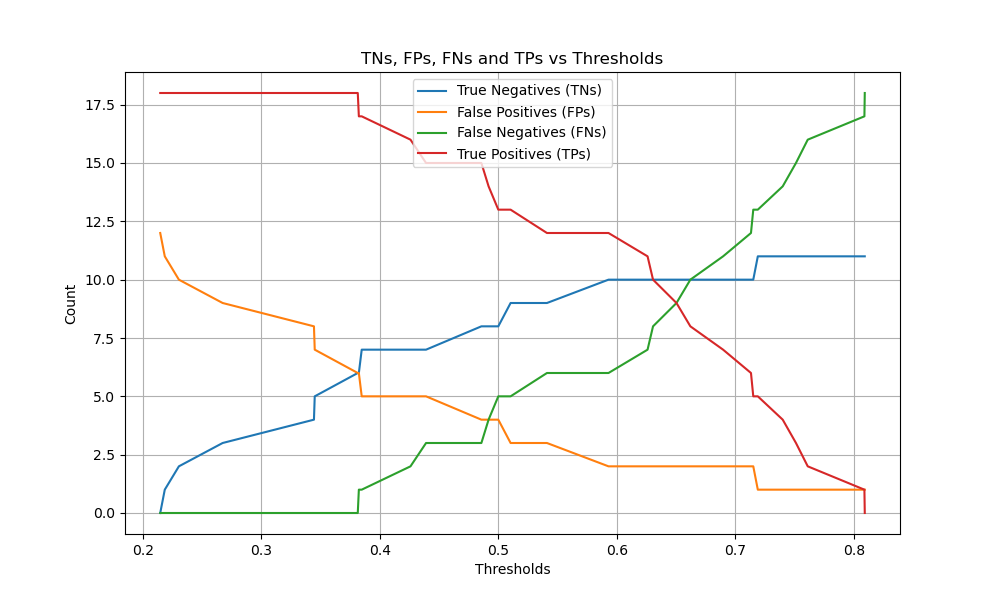
Total running time of the script: (0 minutes 0.243 seconds)
Related examples
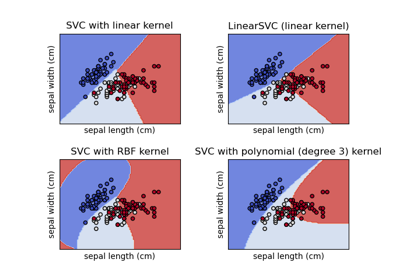
Plot different SVM classifiers in the iris dataset
